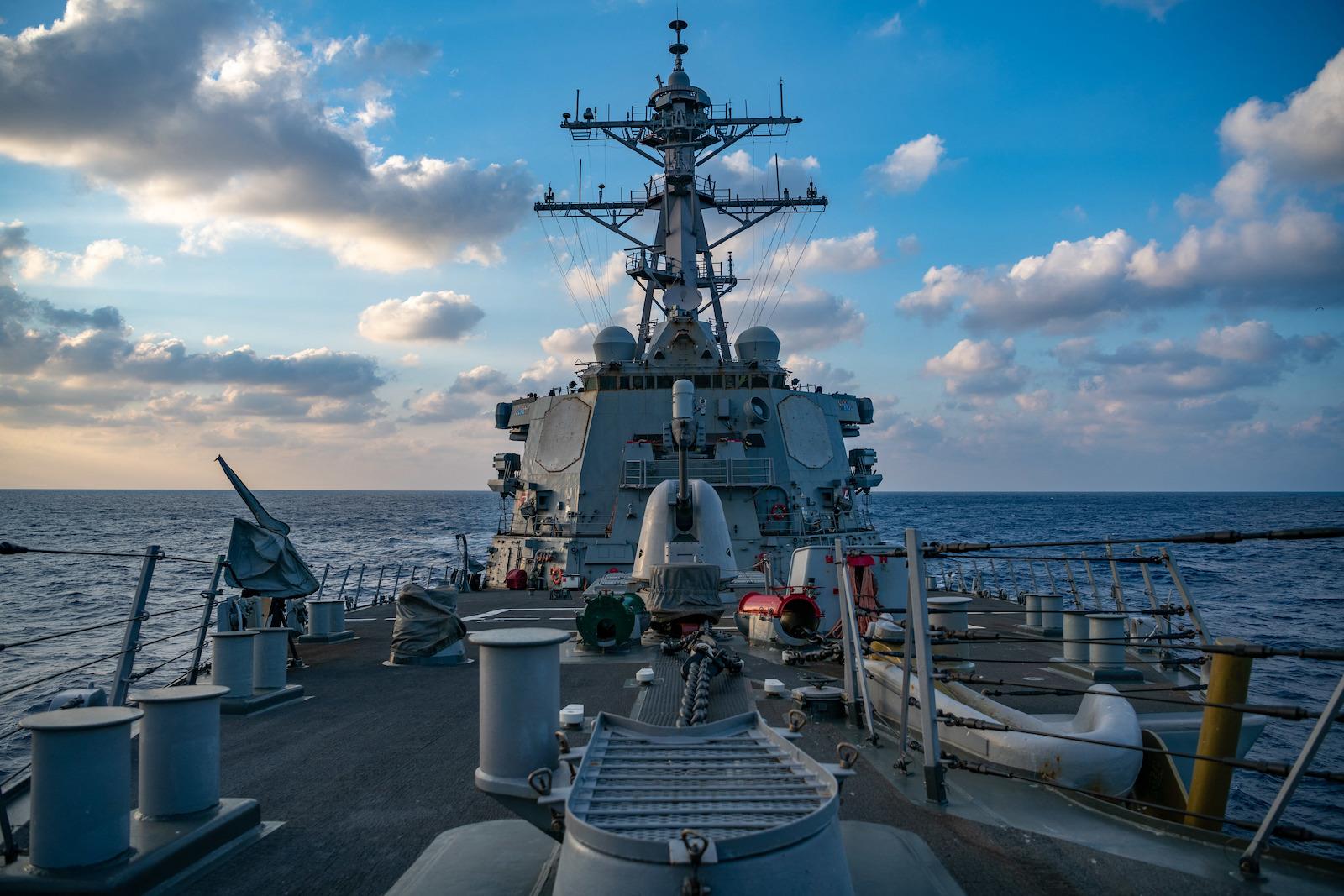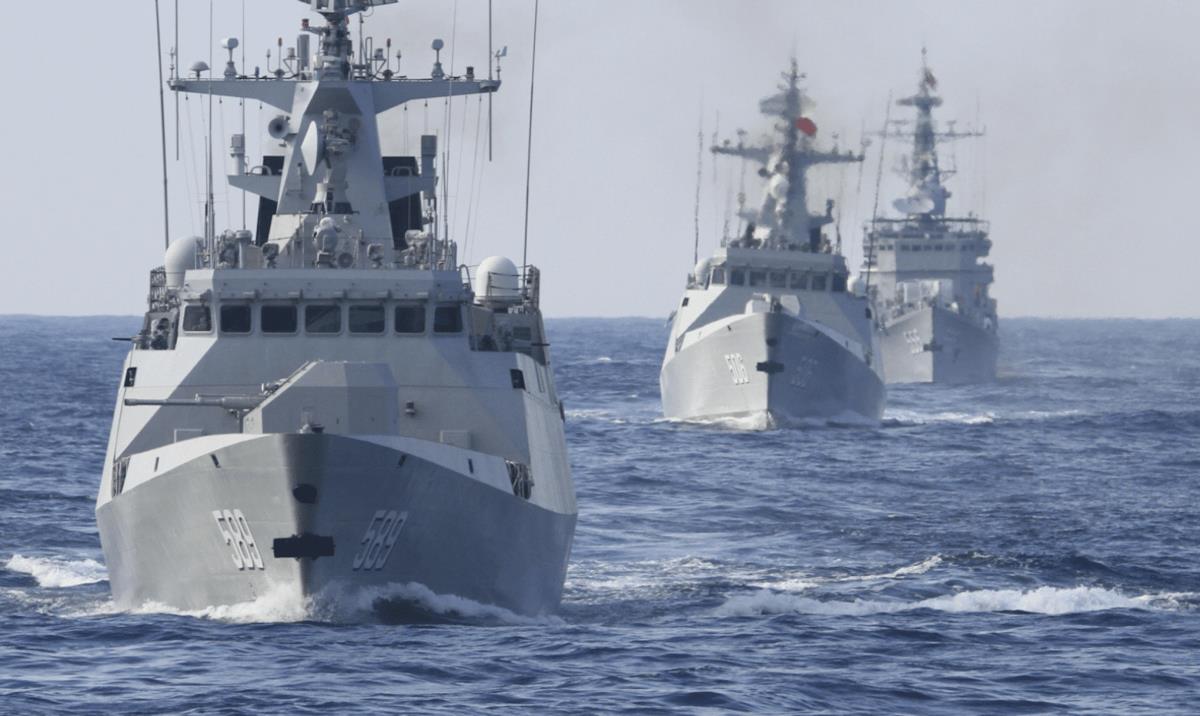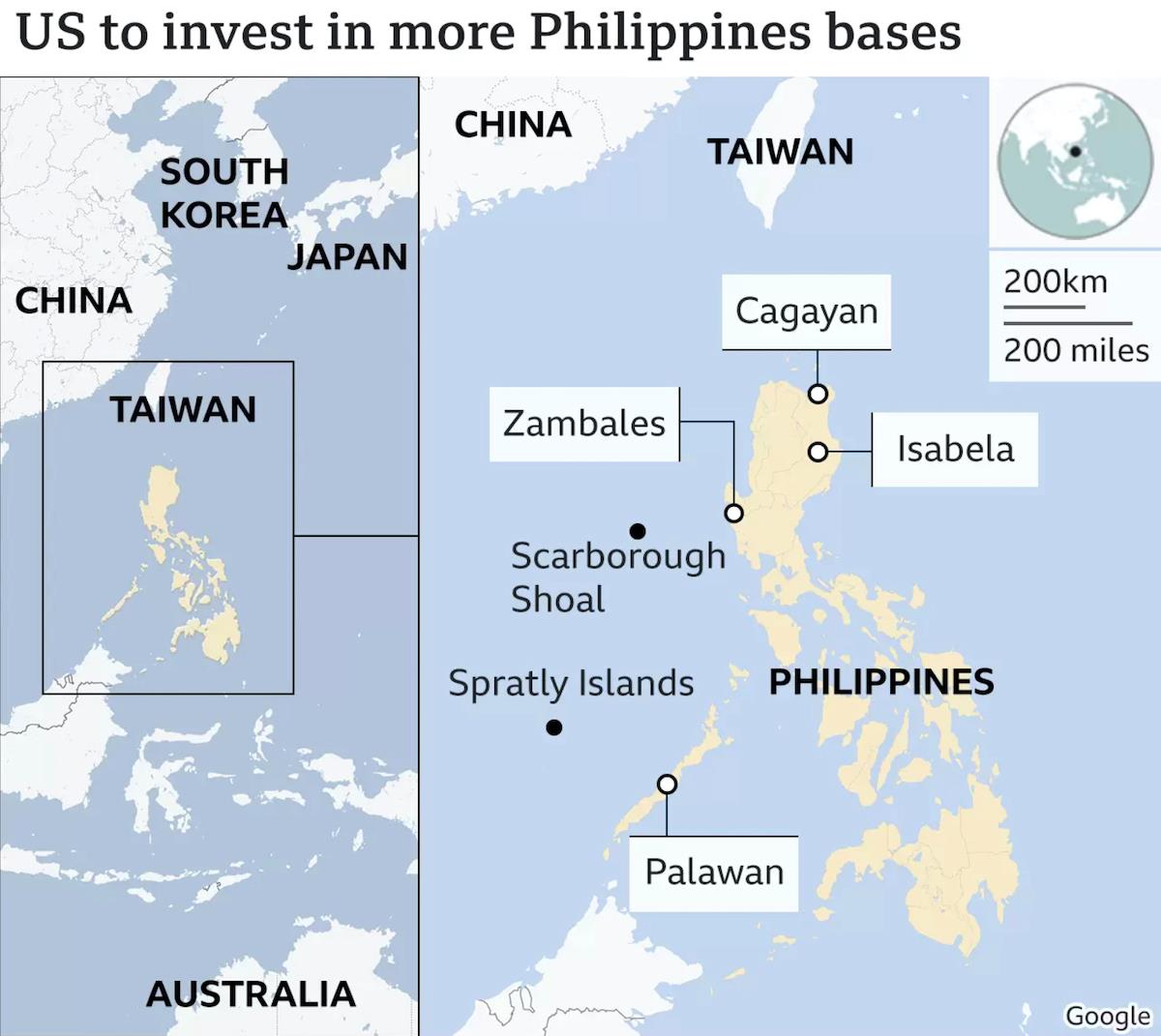(MENAFN- Asia Times) MANILA – The US Navy has conducted its first major freedom of navigation operation (FONOP) in the South China Sea in 2023 with the deployment of the Arleigh Burke-class guided-missile destroyer USS Milius (DDG 69) close to the China-occupied Paracel Islands.
Back in November, the Pentagon deployed the US guided missile cruiser USS Chancellorsville (CG-62) to the contested Spratly group of islands.
the us indo-pacific command (indopacom)
characterized its latest deployment as part of broader efforts to challenge China's“[u]nlawful and sweeping maritime claims in the South China Sea”, which it claims“pose a serious threat to the freedom of the seas, including freedoms of navigation and overflight, free trade and unimpeded commerce, and freedom of economic opportunity for South China Sea littoral nations.”
In recent years, both the Trump and Biden administrations have conducted FONOPs at least once every quarter, deploying US warships well within the 12 nautical miles of Chinese-claimed islands in the disputed waters.
Meanwhile, the US is also preparing to host Philippine President Ferdinand Marcos Jr at the White House while the two treaty allies are expected to conduct their first 2-plus-2 meeting in seven years in April amid booming defense cooperation.
Earlier this year, Marcos Jr greenlighted expanded American access to a host of strategic military bases across the Philippines, including those close to Taiwan's southern shores and the Western portions of the South China Sea, under the two sides' enhanced defense cooperation agreement (edca).
The US is also set to host this month top national security officials from Japan and the Philippines to fortify a new trilateral alliance, known as the Japan-Philippine-US (JAHUS), amid growing fears of potential Chinese kinetic action against Taiwan.
Both Japan and the Philippines have naval bases extremely close to Taiwanese shores, making the two US allies key to preparing for as well as deterring any major conflict over the self-ruling democratic island.
The Philippines is also exploring joint patrols with Australia, Japan and the US in the contested waters.
Over the past decade, the US has steadily expanded its strategic presence in the Indo-Pacific in response to China's large-scale island-building project in the South China Sea.

The Arleigh-Burke class guided-missile destroyer USS Barry conducts operations in the South China Sea in 2020. Photo: AFP / Samuel Hardgrove / US Navy
The disputed waters are not only an artery of global trade, hosting trillions of dollars in annual shipments, but several key US allies and partners also have major interests in the maritime area.
For the Philippines, China's expansive nine-dash line claims present a direct threat to its sovereignty in the South China Sea, while Japan fears Chinese encirclement of its southernmost islands in Senkaku/Diaoyu and Okinawa.
As for the communist regime in Vietnam, a key US security partner, the maritime disputes represent an existential challenge, while US strategic partners such as Singapore are worried over disruptions to regional sea lines of communications.
Since the Obama administration, the Pentagon has launched FONOPs to directly challenge Beijing's expansive claims in adjacent areas. The INDOPACOM conducted two such operations in 2015 and three in 2016.
The Philippines' arbitration award victory at the Hague in 2016, where an international court judged Beijing's expansive claims as incompatible with modern international law, provided a legal pretext for expanded US military deployments in the region.
Under the Trump administration, the US annually conducted, on average, half a dozen FONOPs in the South China Sea.
Amid brewing trade wars with China, that number increased to nine in 2019 , as the Trump government doubled down on its confrontational policy towards the Asian powerhouse and explicitly backed the philippines in the event of any conflict in the South China Sea.
The Biden administration has largely continued its predecessor's policies, conducting as many as three fonops , including
a dual-carrier deployment composed of the Theodore Roosevelt Carrier Strike Group and the Nimitz Carrier Strike Group, across the Taiwan Straits and the South China Sea in its first months in office.
Last year, the US conducted quarterly FONOPs, likely setting the pattern for this year amid festering Sino-American tensions.
In response to the Pentagon's latest deployment, the chinese ministry of national defense (mnd) released a statement, in which it accused the US warship of“illegal entry” into Chinese waters, which it claimed“violated” Beijing's sovereignty and national security.”

Chinese frigates in formation during a maritime training exercise in the South China Sea. Photo: PLA / Zhang Bin
“The US guided-missile destroyer USS Milius illegally entered the territorial waters off China's Xisha Islands once again without the Chinese government's permission on March 24, undermining peace and stability in the South China Sea,” said China MND spokesperson Senior Colonel Tan Kefei.
“We sternly demand the US side to immediately stop such provocative behaviors, otherwise it would take the serious consequences of every eventuality it caused,” he added, warning“The troops of the Chinese People's Liberation Army Southern Theater Command conducted tracking and monitoring in accordance with the law and [subsequently] warned [the US warship] off.”
Despite stern warnings from Beijing, the US Navy's Seventh Fleet spokeswoman commander Haley Sims insisted“The United States will continue to fly, sail and operate wherever international law allows.”
For China, the US naval deployments in the area are part of a broader containment strategy. In its recently-released annual report , the South China Sea Strategic Situation Probing Initiative (SCSPI), a Beijing-based defense think tank, claimed that US forces conducted as many as 1,000 reconnaissance sorties across the disputed waters last year, including some close to the 12 nautical miles of territorial sea of Chinese-occupied islands.
Meanwhile, as many as 12 nuclear-powered submarines and eight US aircraft carrier strike groups and amphibious alert groups entered the area in the same period.
Although the number of US carrier groups deployed decreased on a year-to-year basis in 2022, the duration of US naval deployments increased from an average of four-six days in 2021 to more than 10 days in 2022.
“The frequency and intensity of the US military activity in the South China Sea are increasing further, and the actions are becoming bolder and more aggressive, with a level of excitement that has long surpassed that of the Donald Trump administration,” the Chinese think tank report said.
Another major point of concern for China is the growing role of Philippine bases in projecting American naval power in the region after the Marcos administration's recent EDCA decision. According to the Chinese think tank's report,“US forward bases in the Philippines will play an even more important role in future military operations against the Taiwan Strait and the South China Sea.”
“In 2023, it is foreseeable that, in addition to military operations directly targeting the South China Sea, US military operations against the Taiwan Strait will increasingly become a new variable affecting the stability of the situation in the South China Sea,” it added.

Map: Armed Forces of the Philippines / Screengrab
China is also increasingly concerned by US-led military drills in the area, which grew to as many as 102 last year.
This month, the US and the Philippines are expected to conduct their largest-ever wargames with as many as 17,000 troops, including those from Japan and Australia, attending the annual Balikatan exercises. They will take place provocatively close to contested islands in the South China Sea.
Recognizing China's growing defense capabilities, the Pentagon is leveraging its network of regional alliances to constrain the Asian power's geopolitical ambitions.
In that direction, there will be two-plus-two discussions between US and Philippine foreign and defense chiefs held this month. Shortly after, there will likely be a trilateral meeting among White House National Security Adviser Jake Sullivan and his Japanese (Takeo Akiba) and Filipino (Eduardo Ano) counterparts to solidify the emerging JAPHUS, with a particular focus on Taiwan's defense.
Last year, the three partners hosted a three-day trilateral maritime security dialogue shortly after a high-profile November visit by Philippine Air Force chief Lieutenant General Connor Anthony Canlas to Tokyo in order to finalize new bilateral defense arrangements.
Meanwhile, the Philippines is also exploring joint patrols with Australia, Japan and the US in the South China Sea.
“Meetings have already been set and probably we may have the Japanese and the Australians join in,” Philippine Ambassador to the United States Jose Manuel Romualdez said in an interview last month.
“They would like to join in for joint patrols to make sure that there's the code of conduct and there's freedom of navigation,” he added, underscoring rapidly growing security partnership among the US regional allies.
Follow Richard Javad Heydarian on Twitter at @Richeydarian
Like this:Like Loading...